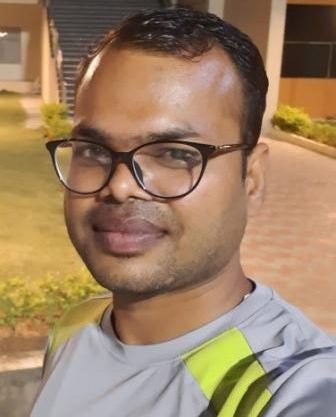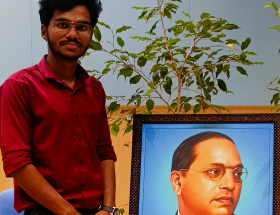Rahul Kumar Gautam
On February 27, a horrible incident took place in Silaibada village in Uttar Pradesh’s Rampur district. The Jatav community had put up a board that was painted with Dr. Ambedkar’s portrait. The UP police, led by the deputy collector, went with a JCB to uproot the board.
The Jatav community opposed the police, claiming that their houses surrounded the small plot of land used as a garbage dump and that they would clean it up and create Babasaheb Park there. Stone-pelting occurred on both sides and while the protesters were on the ground, the SDM directed police to open fire. Two police officers aiming to shoot from the top of the house began firing, and one of the bullets struck the head of a Dalit teen named Somesh. Other people were also injured by the bulets. Somesh’s family claimed that after his death, police burned his body without his parents’ permission.
The small plot of land was designated for garbage collection. Dalit houses surrounded the land. Dalits believed it to be the source of many diseases. So, with the assistance of the gram pradhan, they worked hard and put up a board with Babasaheb’s name and photo on it. The Gangwar caste (and other backward castes) lived over 500 meters from the Dalit community. The Gangwar community has landlords, whereas Dalits do not own land. The Gangwar community objected to the putting up of the board or the demand for Ambedkar park. They filed complaints against Dalits, and the SDM arrived alongside the UP police. When the UP police attempted to remove the board, Dalits resisted. The SDM instructed the police to forcibly remove the protesting Dalits. The police and Dalits got into a physical altercation. Dalits were shot at by police firing from the top of the houses. Some bullets found their way into Somesh’s head, and he instantly died next to the board that the Dalits had erected. Rasheepal and Amit were hurt by some bullets. Both are still alive, according to officials. A seventeen-year-old Somesh paid the price for establishing the board at a garbage collection site or for writing the name and putting a picture of Dr. B.R. Ambedkar.
The Dalit organization, Bheem Army, led by Chandra Shekhar Azad (Ravan), was forcefully stopped at Sambhal on his way to Rampur, but he went and met the family 48 hours after the incident. Chandra Shekhar wrote on X, “Today I am remembering Hathras; Dalit oppression is at its peak in Uttar Pradesh. Brother Somesh was shot dead by police in Rampur, and many people were injured, but the police stopped me in Sambhal. Can’t I meet the victim’s family now? Truly, Uttar Pradesh has changed; criminals no longer need to kill Dalits; Yogi Ji’s police are enough. Send as many cops as you need to stop me. I will definitely go. The government should listen to this carefully, Chief Minister Yogi Adityanath should tell when the Dalit killings in Uttar Pradesh will stop.”
Do you think so? Couldn’t a police officer have a caste mindset? They come from the same places where caste-based villages exist. When an upper caste person passes through a SC village, he assumes Dalits must salute him, and this practice is still prevalent in Uttar Pradesh. When anyone or the media inquire about brotherhood with Dalits, the Upper castes respond that they have been living happily with Dalits for decades. Do you know what their brotherhood is? Every Dalit becomes extremely cautious when entering the upper caste settlements. The upper castes abuse Dalits without hesitation even for the smallest of their mistakes. Who is this happiness for? Definitely for the upper castes. That is why the upper castes say that they live happily together. So, how can we believe that an officer from these places will not have a casteist mindset? A Dalit can recognize the distinctions between police or officers’ behavior toward them and the upper castes. Any officer who visits a Dalit village for any reason expects the Dalit to blindly follow him. That was the outrage expressed in this incident; otherwise, if the upper castes had built a Hindu temple on the same garbage dump site, police would have thought long and hard before deciding to remove the Hindu temple. Upper castes prefer Dalits who do not demand anything and rely on them for their basic needs. Dalits demonstrated courage in defending their rights in Silaibada and therefore the UP police attacked them brutally.
On 2 April 2018 also, the police’s firing shot dead many Dalits opposing the dilution of the SC/ST Act.
Dalits are illiterate, economically disadvantaged, landless, and, despite a 22% vote share in Uttar Pradesh, do not hold power. The upper castes take advantage of these weaknesses and try to control them. Dalits have no land, so they rely on herding for a living. Dalits travel to upper caste lands to feed their animals. Assume an upper-caste man believes that a particular Dalit does not meet his definition of slavery. If he discovers that an animal owned by a Dalit has entered his land, he abuses the Dalit using his caste name. Instead of distributing land to Dalits, the government is distributing it to the upper castes. The Singhror caste (an upper caste) received land from the UP government in the village Sarauli of Fatehpur district. So, the government indirectly promotes caste inequalities and wishes to maintain upper caste supremacy in society. This is not the only injustice faced by Dalits. For decades in Uttar Pradesh, every second Dalit landowner had their land taken over by either the OBC or the upper caste. When the BSP took power in 2008-2009, Bahan Kumari Mayawati directed officials to return Dalits’ lands to them as soon as possible. The significant change occurred while Bahanji was in power. No subsequent government implemented such significant changes for Dalits.
Where is the outrage over these incidents? How long must Dalits wait for the upper-caste-dominated media and administration to wake up? Who is responsible for these incidents? Dalits are economically weak, but not physically. Dalits perform all heavy, laborious jobs in India, from sanitation to rickshaw pulling. Even today, Dalits continue to draw hand rickshaws in West Bengal. This work may be one of the most difficult in modern India. Because of a lack of opportunities, they do not grow along with the country. Dalits need more opportunities to demonstrate their abilities. During Vedic times, the Hindu text Manu Smriti prohibited such opportunities. Dr. B.R. Ambedkar burnt Manu Smriti and wrote in the constitution (Article 17) that untouchability is eliminated from practice in any form. Since then, Dalits have started making progress.However, in modern India, governments make policies that ignore Dalits. For example, the current ruling party has done many things against Dalits, such as de-reservation, 13-point roster, SC/ST Act dilution, closing the door for Dalits in 10% EWS reservation, not ensuring SC/ST/OBC women in women reservation-bill, and the subcategory in SC/ST is being debated in the Supreme Court.
Dalit problems will exist indefinitely unless they form their own government or gain power.
The constitution provides 50% reservation to SC/ST/OBCs as an opportunity to demonstrate their strength that could not be adequately reached. The upper caste-dominated government exploits a loophole in the process to avoid filling SC/ST/OBC positions. Dominance in the ruling government is essential. It is not based on statistics; otherwise, 3% of the Brahmin population would not have ruled India.
~~~
Rahul Kumar Gautam is from Fatehpur district of Uttar Pradesh. He graduated from Allahabad Central University and has done his post-graduation at NIT ALLAHABAD. Currently he is pursuing his Ph.D. in computer science in the area of social network and analysis at Hyderabad Central University









